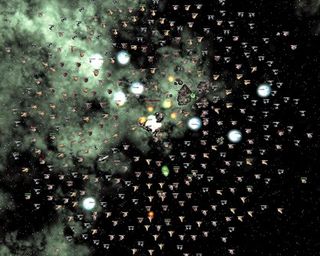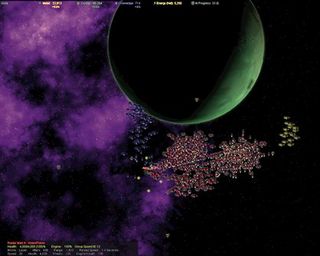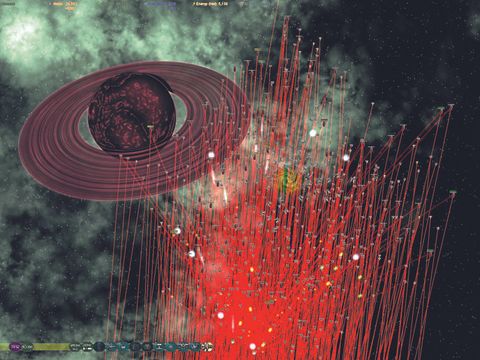GamesRadar+ Verdict
Pros
- +
Delicate balancing act of aggression and defence
- +
Huge scope
- +
Glorious
- +
complex tech tree
Cons
- -
2D graphics
- -
Half-made of ugly
- -
utilitarian fonts
- -
Never lets you rest
Why you can trust GamesRadar+
The difficult thing is trying to describe what AI War actually is. It’s an RTS with turn-based combat. It’s tower defence with spaceships and wormholes. It’s galactic conquest where the silliest thing you can do is try to conquer everything. It’s a skirmish game where the AI has no interest in pretending it’s a human player.

The game universe spans 10 to 120 wormhole-linked planets, depending on how long you want your campaign to be – a couple of hours for the former, a good 20 for the latter. Two of those planets –which you’ll discover only from extensive exploration – are home base to two AI factions that must be defeated. It’s two no matter what, even in co-op, which is hands down the best way to play AI War.
It’s a crusade, a hunt for your foes’ very hearts. Except they’re fighting back, and in a way you cannot. At regular intervals, no matter what, they’ll warp in an attack fleet and head straight for one or more of your systems. The size and ferocity of this fleet depends on how much you’ve ticked them off. Yet it’s necessary to attack their minor systems, as you need the resources and the wormholes. Whenever you do, and whenever you climb up the tech tree or build something enormobig, the AI’s Alert Level climbs. ‘Let sleeping dogs lie’ is a fine adage, but it doesn’t apply when the dog in question is sleeping on top of a bunch of Crystal and Metal mines you need in order to build starships.

‘Paranoid expansion’ is perhaps an accurate summation. You have to grow your empire, but as you do you worsen your lot, finding it necessary to set up increasingly elaborate and expensive defences in your captured systems. This constant, delicate balancing act is why AI War works so well. Systems you don’t need should be left alone, as all grabbing them achieves is to raise the rageometer.
On top of that is the glorious complexity of the tech tree. Supreme Commander/Total Annihilation is your best touchstone, both in terms of the thousands-strong unit count and the rigid this-beats-this-and-that-beats-this balance. But new nuances reveal themselves constantly, as the enemy drops something new on you or you encounter some new, double-hard-bastard defensive setup.
It doesn’t ever get easier: it just gets bigger. More fronts to assault and defend, bigger ships to kill, and bigger ships to kill your bigger ships. Nukes, ion cannons, planet-sized forcefields, near-indestructible Astro Trains. A foe that never sleeps.

Hours ago, galaxies ago, you stopped noticing it was 2D and half-made of ugly, utilitarian fonts. It has the presentation of a spreadsheet, but as much heart and soul as Dune 2, Total Annihilation, Homeworld, Galactic Civilizations and Desktop Tower Defence rolled into one.
Oct 5, 2009
More info
| Genre | Strategy |
| Description | It has the presentation of a spreadsheet, but as much heart and soul as Dune 2, Total Annihilation, Homeworld, Galactic Civilizations and Desktop Tower Defence rolled into one. |
| Platform | "PC" |
| US censor rating | "Rating Pending" |
| UK censor rating | "Rating Pending" |
| Alternative names | "AI War: Fleet Command" |
| Release date | 1 January 1970 (US), 1 January 1970 (UK) |

4 years later, The Invincible Man star gives promising update on the sequel: “We are intent on continuing that story”

The real Thor comes face-to-face with his capitalist villain doppelganger Chad Hammer in this preview of Immortal Thor #10

"This cannot be tolerated": Escape from Tarkov community in meltdown over $250 edition with exclusive PvE mode, as a 131-word chant consumes the official Discord
